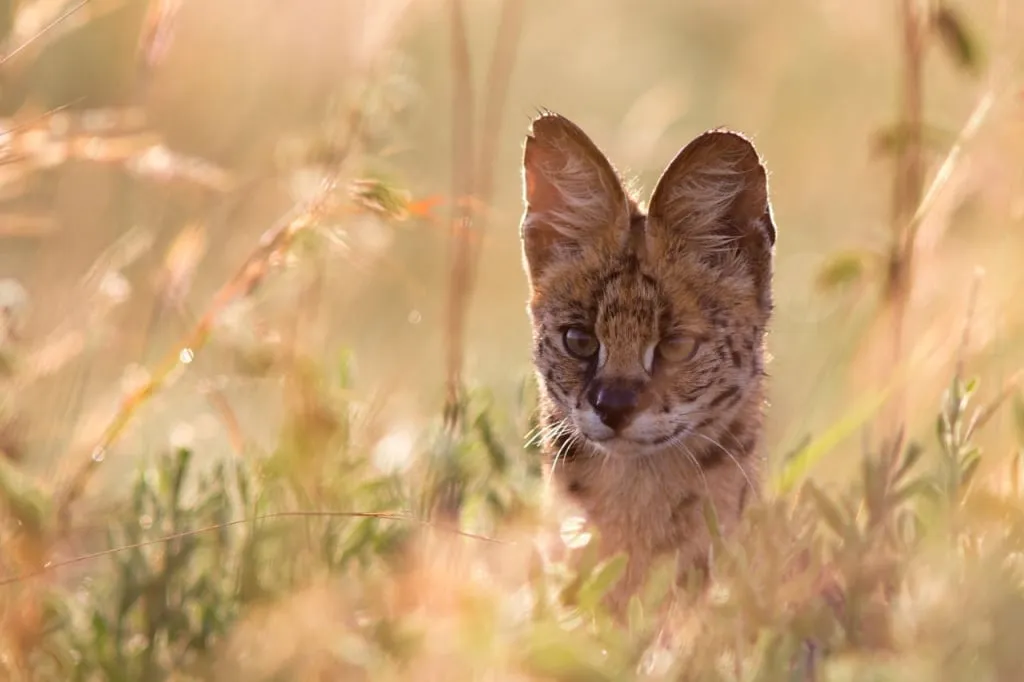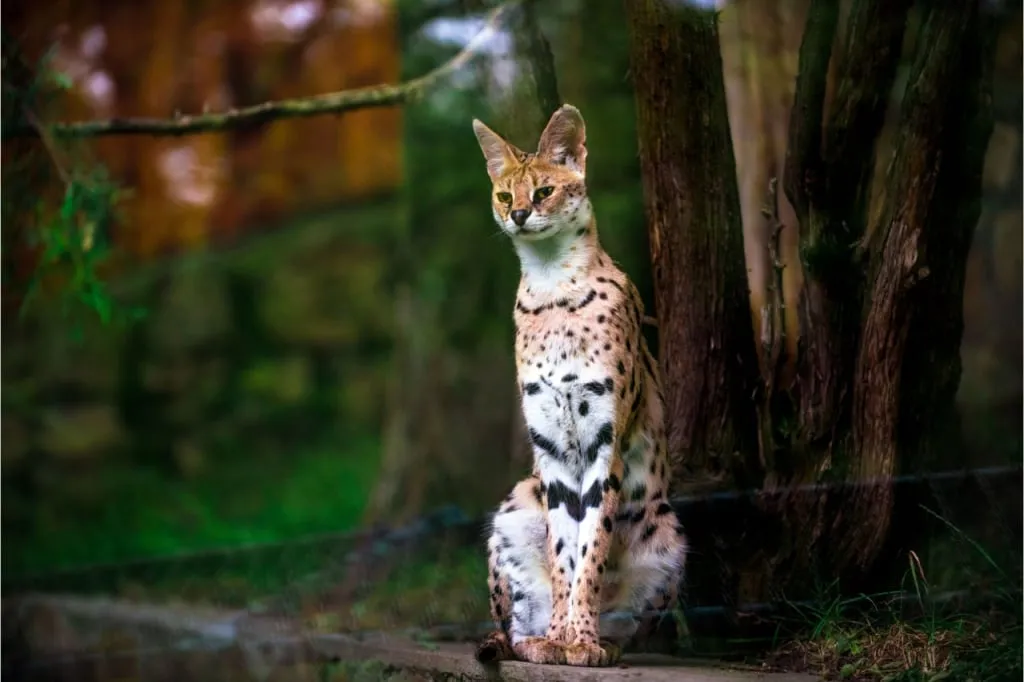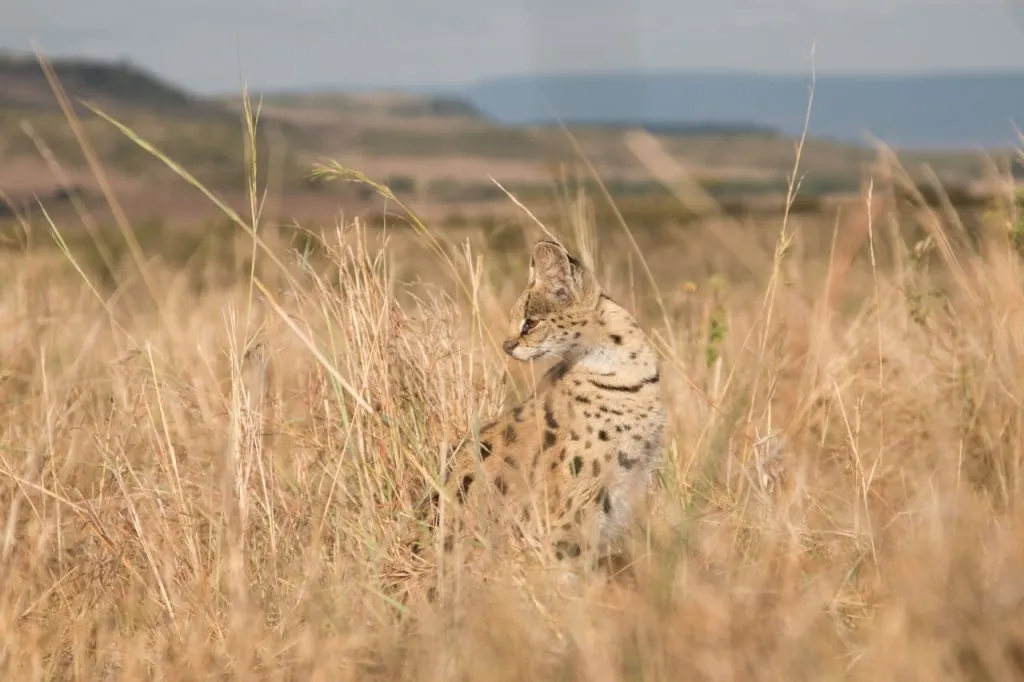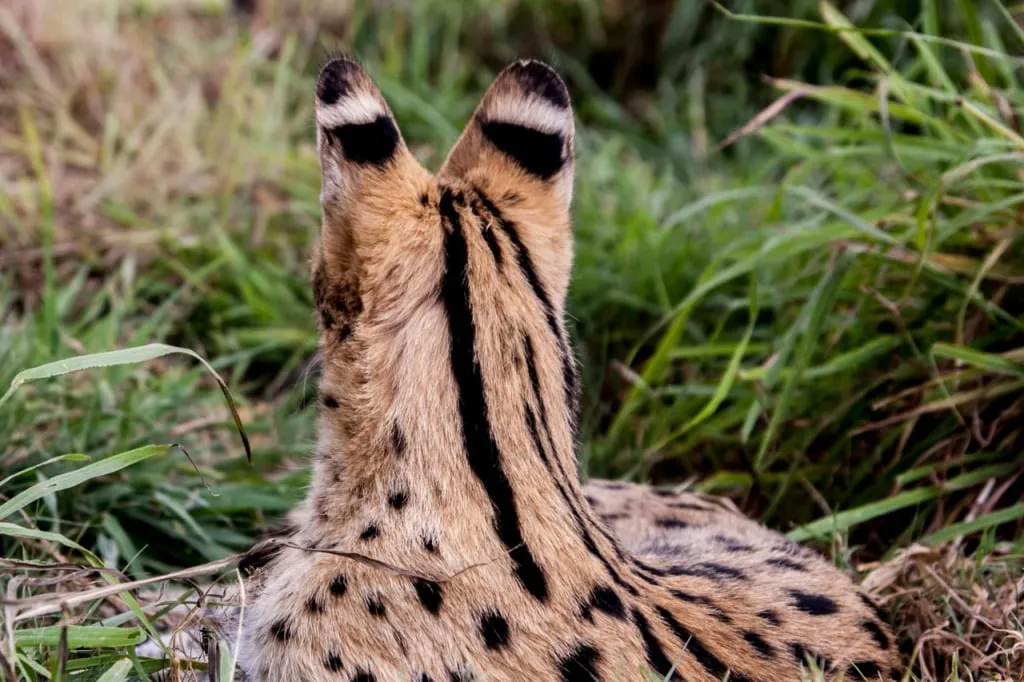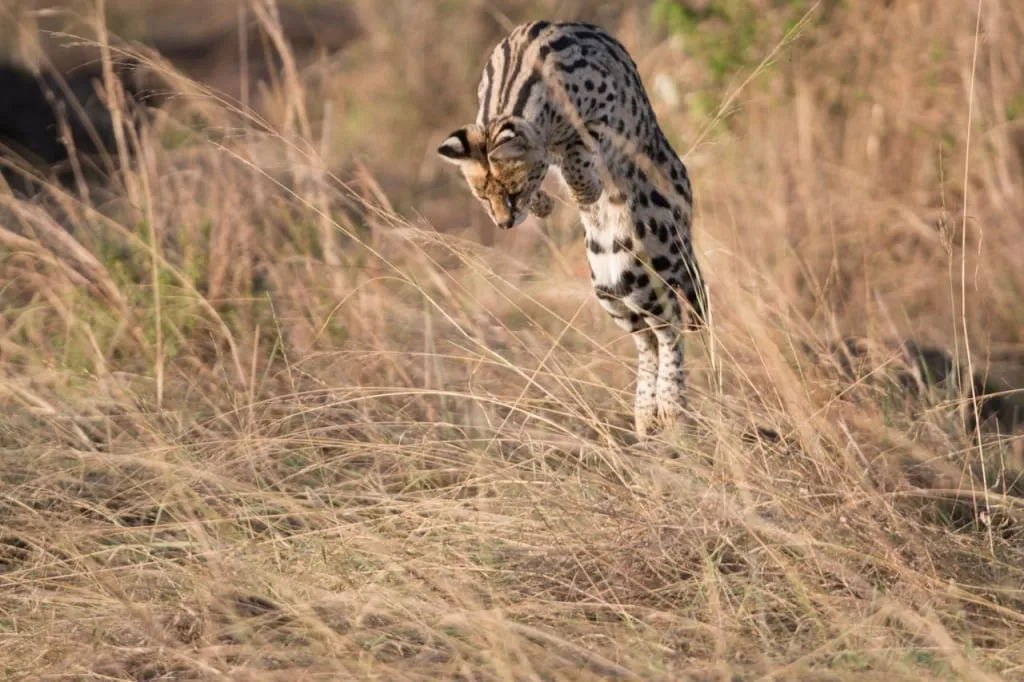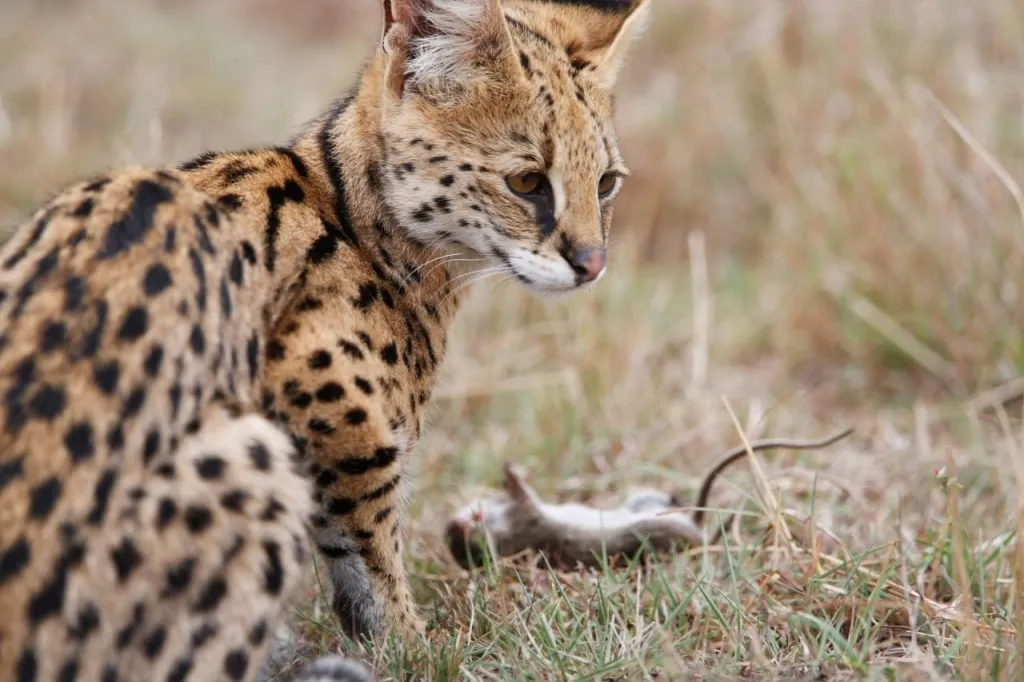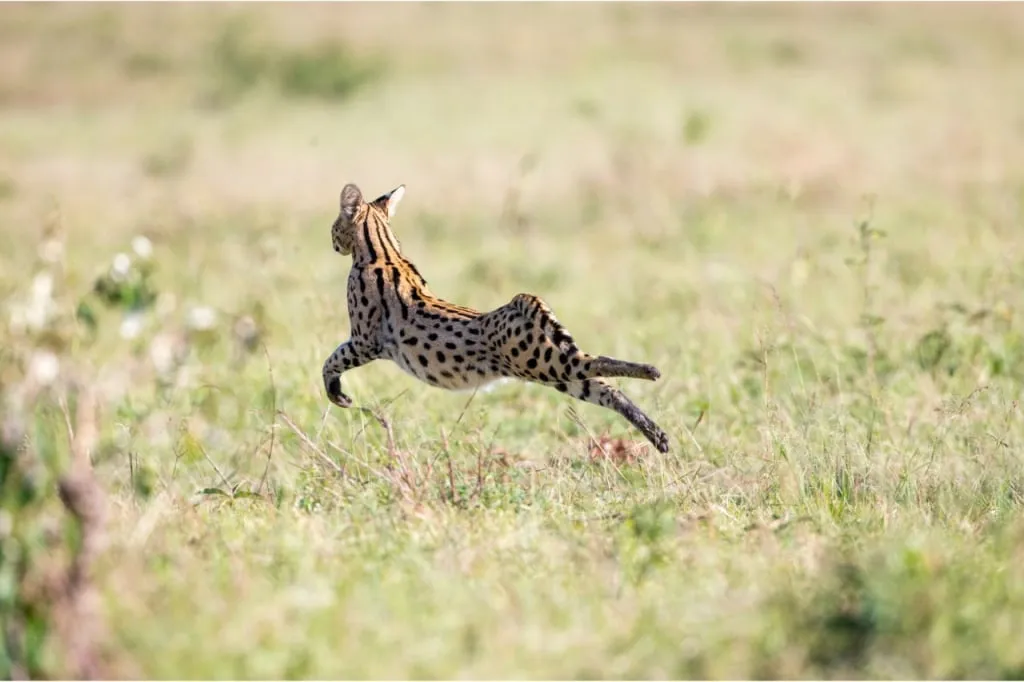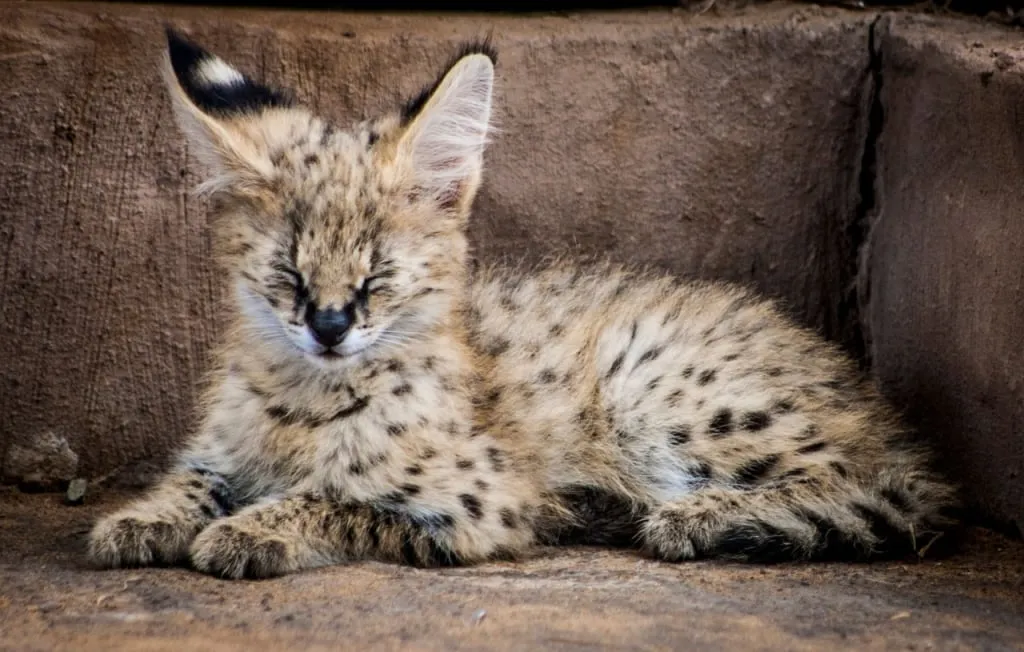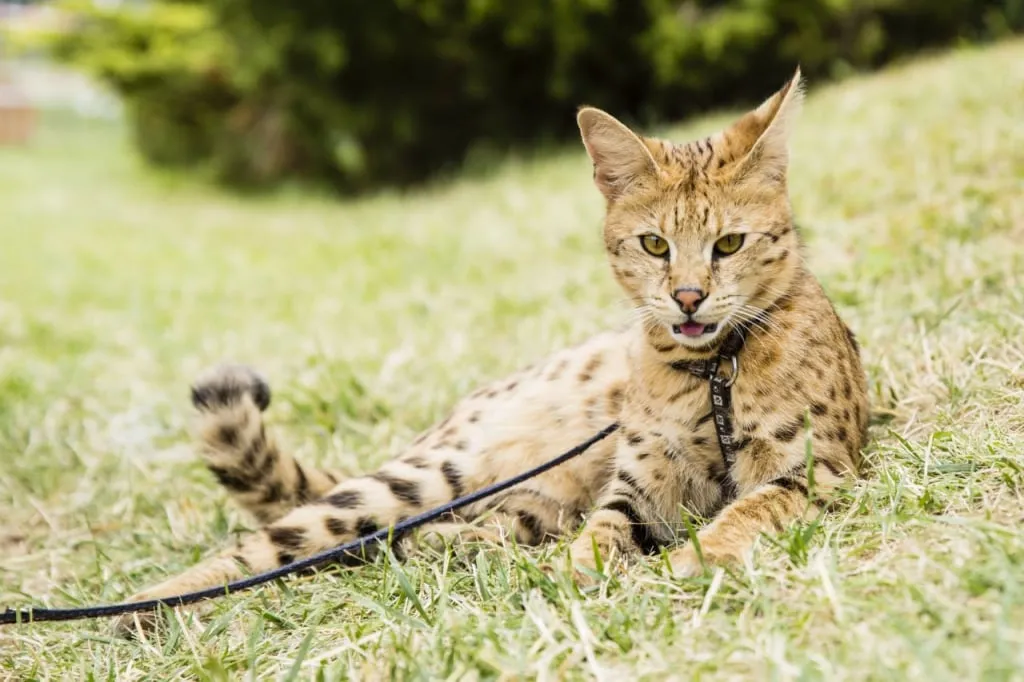In this article, we will talk about servals, their appearance, lifestyle, and how to tell the difference between the serval and other felines such as the cheetah. Are servals good as pets? Where do they live in their natural environment and how can you see them? You will find the answers to these questions in this article by Altezza Travel.
Who are servals?
The serval is a wild cat native to the savannahs and forests of Africa. Those unfamiliar with the differences between wild felines may confuse the serval with the cheetah, jaguar, leopard, or with South American spotted cats (genus Leopardus) such as the ocelot. The resemblance is due to the spotted coloration that is common among many species. However, if the serval has a scientifically confirmed kinship with other species of wild cats, the African golden cat would be their closest relative. Along with the caracal, the serval and the golden cat are members of a single lineage - their ancestor was the first of the cats to settle in Africa.

In fact, the serval is easily distinguished from all other cats by its ears - they are unusually large, standing like two houses on the edge of a hill. The serval is also known for its superb hearing - it can even hear rodents moving under the earth. As soon as this predator senses vibration, it uses its sharp claws to quickly dig into the ground. A few seconds and the prey is in the clutches of the serval. No mouse will hide underground if there is a hungry serval with its huge ears searching for dinner.
Another distinctive feature of the serval is its long, strong legs. Unlike the cheetah, it cannot chase its prey for long periods of time, but the serval can move quickly at short distances. These legs also allow the cat to quickly climb trees and catch tree hyraxes or jump high to knock down a flying bird. Being 60 centimeters tall at the withers, the serval can jump more than 2 meters high! And with a little bit of speed, it can jump 4 meters in length.
You can see these beautiful animals in Africa, south of the Sahara. They were once found in the north of the continent too, but due to human hunting, they are now an endangered species in North Africa. However, in Central and especially East Africa, the serval is very common, for example, the entire territory of Tanzania is a part of their habitat.
You can see servals in the wild with your own eyes on any of Altezza Travel's safari programs. All these tours include visits to national parks where servals live in their natural habitat. If you go on a safari, ask your guide to look for these animals and, if possible, visit their habitats, where there is a high chance of seeing these beautiful wild cats. It is best to choose the end of the dry seasons, that is, February and the first half of March, and September-October when the grass isn’t so tall. In periods after the rains, the grass is too high and it is not easy to spot a serval through the dense flora.
Interesting facts about servals
Servals prefer to settle in savannahs or sparse woodlands, where there is plenty of tall grass ideally suited for hunting rodents and hiding from enemies. However, there are known cases of these cats being seen at high altitudes, for example in the grasses of the Afro-Alpine meadows of Kilimanjaro at 3800 meters.
Interestingly, there are differences in coloration between the subspecies that live on the plains and the servals that live in the woodlands. Savannah dwellers are lighter and have more spots, while servals that live among the trees have developed a special camouflage: the color of their skin is closer to brown, and stripes dominate over spots.
If you look closely, you can see one white stripe on the back of the serval's ears, lined by black spots above and below. This pattern is usually called "false eyes." Scientists are arguing about the purpose of this color feature, but everyone agrees that it plays an important role in communication. The assumption that the cats with their "false eyes" prevent predators from attacking them from behind seems logical.
Being excellent hunters, these graceful wild cats still cannot escape the dangers of Africa. Servals are hunted by hyenas, African wild dogs, leopards, and martial eagles. Lions and Nile crocodiles have been known to attack them too. Serval kittens can fall prey to snakes, birds of prey, honey badgers, and mongooses. But servals themselves prefer to eat small rodents: rats, mice, and shrews. Reptiles, birds, and insects are also included in their diet. Occasionally, servals are tempted to hunt larger game, for example, small antelopes like duikers, hares, and large birds like flamingos. Servals prefer to live near bodies of water, so they sometimes diversify their diet with frogs and even fish. It is also interesting that they like water, just as, for example, jaguars and tigers are not afraid of getting wet. But in contrast to most other felines, servals can just play in the water and have a lot of fun.
These graceful cats hunt by lowering to the ground and moving slowly through thickets of bamboo or grass. Once they find their prey, they begin to approach it slowly and silently. Servals being true wild cats are very patient and can freeze for 15 minutes without moving so as not to scare the prey. As soon as they are about three meters away from their victim, the serval can make a sudden jump, relying on its strong hind legs. The front legs of the cat hit its prey incapacitating or even killing it - an animal like a rat has little chance of survival.
Servals prefer to hunt at night, traveling up to four kilometers at a time. These cats can also be active during daylight hours, although, like many predators in Africa, they prefer to spend the hot daytime hours resting in the shade. Servals are very efficient hunters, capable of catching their prey 50-60% of the time. When observing them in Ngorongoro it was found that in 24 hours this cat makes on average 15-16 kills.
The most iconic features of servals are of course their long legs and ears, which are the longest in relation to the body among all felines. Their long legs make them amazing jumpers and add some playfulness to their personality. Servals have been reported to jump four meters high in a hunting leap and knock down a bird from a height of three meters. Also, these cats often climb trees just to have fun. Their long wide ears, which can independently rotate 180 degrees, help them to hunt and avoid other predators more successfully. Their outstanding ability to catch prey leads to a tangible effect on rodent numbers. In fact, by killing up to 4,000 rodents a year (per serval!), servals control their population, making these cats useful neighbors for humans.
Where do servals live?
The northern border of the serval habitat today is limited by the Sahara desert. Also, they are not found around the Congo Basin in the west of the continent, nor in southwest Africa. Servals once thrived north of the Sahara, but are now thought to be extinct in Algeria, while in Morocco their presence is not strictly confirmed: there are only isolated reports of small numbers of animals. In Tunisia, servals went extinct but a small population was introduced in the Feijda National Park. The saddest history of the serval was in the Republic of South Africa. It was there that the serval was first sighted and described by Europeans, but today the subspecies that lived there have completely disappeared, having been exterminated
In East Africa, as in the rest of its habitat, the serval is abundant. For example, in Tanzania, scientists often observe them in the Ngorongoro crater. It was there that researchers studied the success rate of serval hunting, as well as their mating periods - for Ngorongoro this is the end of the dry season, i.e. September-November. It is during this period that serval kittens are born. Interestingly, the parents sometimes make nests in the burrows left by porcupines and aardvarks. More often, the nest is made right in the grass, so when visiting the national parks by off-road cars, one must follow the rules and not drive off the designated path in order to avoid running over the newborn kittens.
There are servals in other national parks of Tanzania, such as Serengeti, Lake Manyara, and others. These cats prefer flat grasslands located near swamps, lakes, and rivers. That is where you should look for them first.
Do servals need protection?
Strictly speaking, this species does not need any special human action to protect it from disappearing. The serval is listed as Least Concern in the IUCN Red List of Threatened Species and the population is stable. Only the very small and isolated populations in Northern Africa are on the verge of extinction.
The draining of wetlands and the expansion of pastures might pose a threat to the species. Both lead to a decrease in the number of rodents, which in turn constitute 80-97% of the serval's diet. But here, too, no critical changes are occurring. On the contrary, there is even evidence of repopulation of areas from which servals were previously expelled.
Servals are still hunted by humans in some African countries, although not in large numbers. These cats are prized on the local markets for their beautiful leopard-like skin. Certain parts of the cats’ bodies, such as teeth and claws, are occasionally used for ritual purposes and in so-called traditional medicine. All of this applies to some countries in West Africa and is not a continent-wide phenomenon.
Of much greater concern is the use of servals as animals kept in human homes. These cats are beautiful, graceful, and surprisingly loyal to whom they become accustomed. But at the same time, they retain the qualities of wild animals and become difficult pets, which leads to a lot of problems both for the household that keeps it and for the serval.
Are servals good as pets? What are the alternatives?
Small serval kittens are incredibly adorable. They are playful, curious, and affectionate. These are the reasons why many people want to get servals as pets and keep them in the house.
In the wild, servals live about 10 years on average, but in captivity, their lifespan typically increases to up to 20 years. However, this is usually the case when servals are professionally taken care of in the right environment. In regular domestic conditions, the serval is prone to diseases due to contact with other species of animals, as well as due to living in a very unnatural habitat. Of course, a frequent problem is the inability of owners to meet all the veterinary and dietary needs of the wild cat.
Interestingly, it was the serval that contributed to the hybrid species which has become the most desirable and the most expensive of all domestic cat breeds. We are talking about the Savannah breed. The first kittens were born in 1986 from a male serval and a female house cat. This breed was carefully developed for many years, and in 2001 was officially recognized.
Savannah cats are considered calm, trainable, adaptable, and very loyal. They get along well with other pets and can even compete with dogs in their loyalty to their owners. Many of us would agree that this is a rare quality for a domestic cat.
At the same time, Savannah cats require a lot of space to meet their need of staying very active and exploring new locations. It is impossible to keep them in the house all the time. Also, they, like their wild ancestors, are very fond of water and love to play with it in different ways. For some Savannah owners, it even becomes a problem - a bowl of water is perceived by these cats as an exciting toy.
Today, the Savannah is still the most expensive breed of domestic cat. And if you've heard of the Ashera breed which was claimed to be the rarest and extremely pricy, you should know it's still the same Savannah that fraudsters have been passing off as a unique new breed. Domestic cats bred from servals are a good alternative to the servals themselves, who are unreasonably kept as pets.
Servals: better in the wild than in captivity
Trying to keep a serval at home is a bad idea. First of all, it is bad for the animal itself, which needs space and all the features of the natural environment. Without this, the serval will not feel well and might get sick. It is unethical to buy a feral cat and restrict it to the confines of a human home. In many countries, such as Canada and the United States, at least in most provinces and states, it is illegal to own a serval. In other regions, you often have to get a license to own a serval.
Trapping servals in the wild is illegal, which means that any deal to buy a serval will directly support poaching. It's about the same as buying a rhino horn, an elephant tusk, or a leopard skin. All this means is that somewhere in Africa a poacher has killed or mutilated a beautiful and free animal, most likely leaving its family or herd members without protection and support. It also means that he will do it again and again because there is a black market demand for the exotic animal or some part of it. This is the scheme by which poaching thrives in poor countries: people with money and strange whims encourage people in need to commit criminal acts that hurt the animals.
Involuntary and prolonged confined space inevitably causes behavioral problems in a wild animal, especially in one as intelligent and active as the serval. A serval needs to walk and explore 2-4 km in one night, which no metropolis resident can provide. These cats can hardly be trained, which means that they will behave as they do in the wild: mark their territory, and dig into the ground (and into anything that looks like the ground, for example, soft furniture) with their claws.
Also, taking care of the animal and providing a specific diet that is almost 100% raw meat will be a huge challenge. Is everyone willing to get 15 fresh rat carcasses daily for their pet? And for proper digestion, the serval needs to eat whole rodents with fur and all. The hunting instinct of the wild cat should not be forgotten too - the owners, as well as their guests and neighbors, can end up with serious issues.
Attempts to turn exotic wild animals into pets rarely end well. More often than not, it ends in accidents, interference from the authorities and the police, or the animal that has disappointed the irresponsible owner being thrown out to the street. Then the cat is frightened, lost, suffers from attacks by dogs and other animals, and often dies of starvation, unable to feed and thrive away from its familiar habitat. The wild cat has honed its survival skills and instincts in African savannahs, forests, and wetlands. So the urban environment is foreign and very dangerous for the serval.
Obviously, the serval is a species unsuitable for captivity. It is much better to observe it in the wild. So if you are interested in seeing these graceful cats with long legs and big plate-shaped ears, come to Africa, go on a safari and study them in the savanna. This way, you will have life-long memories without interfering with their lives.
We oppose any kind of animal abuse. Ethical tourism consists of staying close to wildlife habitats on specially designed premises, observing wild animals and their lives within national park rules, enjoying stories and facts about the animals from your guide, and taking wonderful pictures that will stay with you forever.Choose any of Altezza Travel's safari tours, such as the big seven-day safari in Tarangire, Ngorongoro, and Serengeti, and see the amazing servals in the wild - in their home!













